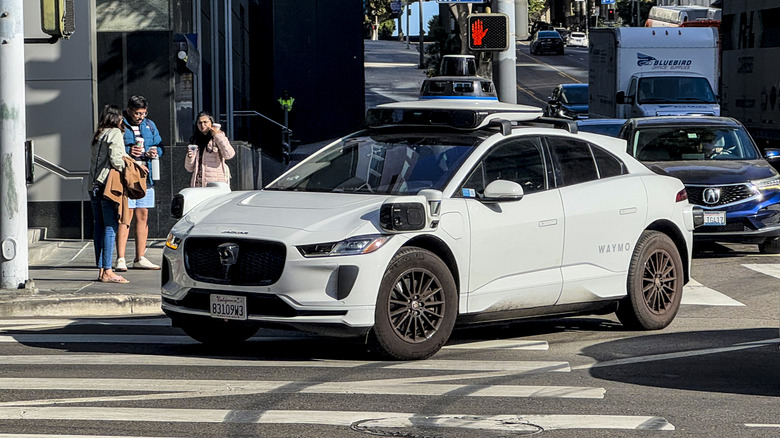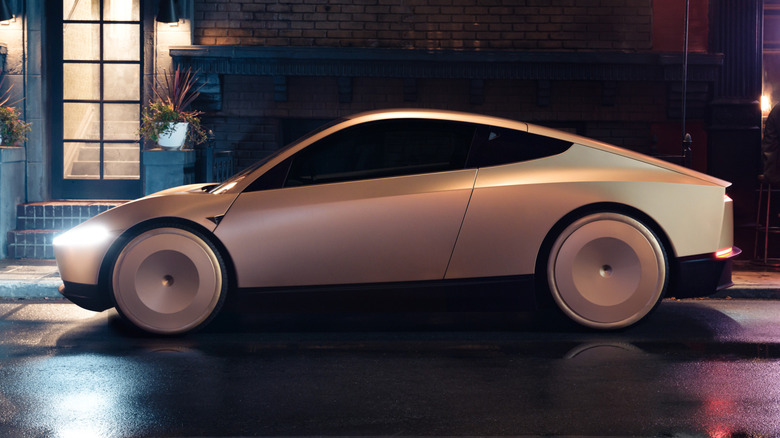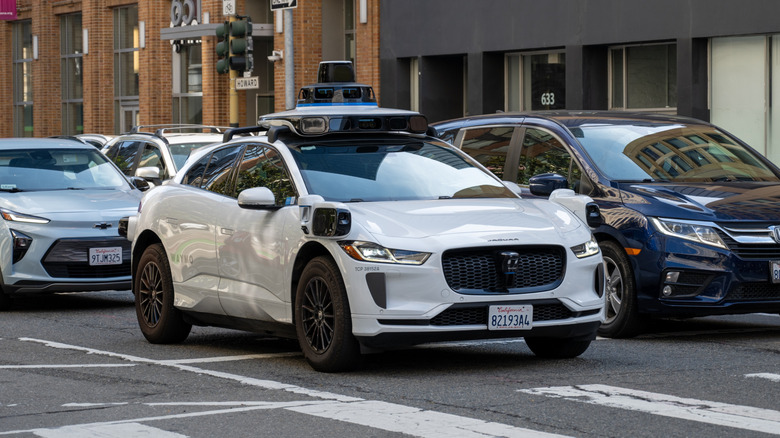Tesla Vs Waymo: Who's Winning The Robotaxi War?
Tesla CEO Elon Musk has been saying that Robotaxis could be descending onto major cities across the United States any day now. But when exactly is that, and can Tesla's Robotaxis catch up to — or surpass — Waymo when they finally arrive? Self-driving taxi services have been expanding across the country, allowing people to get to their destination without any human interaction. It's an appealing concept, but not every autonomous car has earned the same level of trust.
Google's Self-Driving Car Project, Waymo, is currently available in Phoenix, Los Angeles, Atlanta, Austin, and San Francisco — even bringing riders to the San Francisco International Airport. In 2026, Waymo will be in even more major cities, including Las Vegas, where it's currently testing how well it performs in the city's stressful traffic and massive intersections. Vegas is also home to another new robot taxi service, Amazon's Zoox. Meanwhile, where are Tesla's Robotaxis? The official Robotaxi launch was in June 2025, but even the official website says nothing more than "in the future" when looking for a date. There are some monitored rides in a few cities, but Tesla claims it's slow to launch due to a focus on safety. Let's see how that's looking so far.
Waymo vs. Tesla Robotaxi: Which is safer?
There will always be skepticism over self-driving cars at this stage, but should you trust Waymo or Robotaxi to get you to your destination safely? In a 2023 test, Waymo reported just two accidents and 18 minor bumps after its vehicles drove for 1 million miles — and 55% of the accidents were not even Waymo's fault. As of June 2025, Waymo has driven 96 million miles, and the safety technology has only improved — in fact, Waymo even claims it makes cities safer compared to those with only human drivers. Waymo uses Lidar and radar sensors, equipped with plenty of cameras and real-world mapping, to make its decisions. Robotaxis currently use far fewer cameras, leaving some riders not feeling as confident.
Tesla claims that Robotaxis are slow to come to major cities due to a focus on safety. However, its Full Self-Driving software has a history of not following traffic laws, causing the National Highway Traffic Safety Administration to look into reports of dangerous lane changes and vehicles running red lights. In MotorTrend's own experience with a Robotaxi in Austin, the Robotaxi took a right turn without stopping at all. "No pedestrians or cyclists were present, so the Tesla's move came without harm, but crossing a wide sidewalk without stopping or slowing seemed like an unnecessary risk for an experimental self-driving car to take," Alexander Stoklosa reported.
Waymo vs. Tesla Robotaxi: Which is faster?
People often use taxis for the convenience rather than dealing with public transportation, so some reporters have been testing out how long it takes both Waymo and Tesla's Robotaxi to get them to their destination. MotorTrend reported that Waymo took a while to get into cities with limited vehicles, since you have to hail them through Uber and may get a human instead. Meanwhile, getting a Robotaxi on the invite-only Tesla app was easy, although it parked in a peculiar spot to pick them up. The San Francisco Standard also conducted its own experiment, which found that Waymo parked further away than Robotaxi upon pickup due to Waymo avoiding entrances by design.
Once the rides began, Waymo was able to get the reporters to their destination faster while also making them feel more confident in its ability to deal with challenges and split-second decisions. Waymo is currently hailed as the best self-driving taxi service, but Robotaxi still can catch up if it can smooth out some of its minor computer issues and learns to respect the law a bit better.


